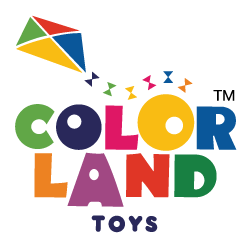10 Tips Before Choosing Toys For Kids

Toys play a crucial role in children's growth and development, providing them with opportunities for exploration, creativity, and learning. However, not all toys are created equal, and safety should always be a top priority when selecting toys for children. In this blog post, we'll discuss Toy Safety 101 and provide valuable tips for choosing safe and age-appropriate toys for your little ones.
10 Tips For Choosing Toys
Tip 1:
Consider developmental milestones: Children go through various developmental stages, each with its own set of milestones. When choosing toys, it's essential to consider where your child is developmentally. For example, infants are in the early stages of sensory exploration and may benefit from toys that stimulate their senses, such as brightly coloured rattles or soft plush toys with different textures. Toddlers, on the other hand, are beginning to develop fine motor skills and may enjoy toys that encourage stacking, sorting, or simple puzzles.
Tip 2:
Check the age recommendations: Age recommendations on toy packaging are there for a reason—they provide guidance on which toys are suitable for children at different stages of development. These recommendations take into account safety considerations, as well as the cognitive, physical, and emotional abilities of children at various ages. It's important to follow these recommendations to ensure that the toys you choose are safe and appropriate for your child's age and stage of development.
Tip 3:
Pay attention to safety features: Safety should always be a top priority when selecting toys for children. Look for toys that are free from potential hazards such as sharp edges, small parts, or choking hazards. Avoid toys with strings or cords longer than 12 inches for infants and toddlers, as they can pose a strangulation risk. Additionally, check for any warning labels or safety certifications on the toy packaging to ensure that the toy meets safety standards.
Tip 4:
Choose toys that encourage exploration: Young children learn through exploration and sensory experiences. Choose toys that stimulate their senses and encourage hands-on exploration, such as toys with different textures, colors, and sounds. For infants, toys like rattles, textured balls, and soft books are great for stimulating their senses and promoting early cognitive development. As children get older, they may enjoy toys that encourage more active exploration, such as building blocks, shape sorters, or musical instruments.
Tip 5:
Consider your child's interests: Every child is unique, with their own interests, preferences, and personality. When choosing toys, consider what interests and hobbies your child has. Choose toys that align with their interests, whether it's animals, vehicles, arts and crafts, or role-playing activities. By selecting toys that capture your child's interest, you can keep them engaged and motivated to play and learn.
Tip 6:
Think about long-term play value: When choosing toys for your child, think about their long-term play value. Look for toys that offer versatility and can be used in multiple ways or adapted for different ages and stages of development. For example, building blocks or construction sets can provide hours of entertainment for children of all ages and can be used to build a variety of structures, fostering creativity and imagination.
Tip 7:
Encourage active play: Physical activity is essential for children's overall health and well-being. Choose toys that encourage physical activity and movement, such as balls, jump ropes, or ride-on toys. Active play not only helps children develop gross motor skills and coordination but also promotes physical fitness and helps them burn off excess energy.
Tip 8:
Foster creativity and imagination: Creativity and imagination are important skills that children develop through play. Choose toys that inspire creativity and imagination, such as art supplies, dress-up costumes, or pretend play sets. These types of toys allow children to explore their imagination, express themselves creatively, and engage in open-ended play experiences. By encouraging creativity and imagination, you can help your child develop important skills such as problem-solving, critical thinking, and self-expression.
Tip 9:
Balance technology with traditional play: In today's digital age, there's no denying the appeal of technology-based toys and gadgets. While these toys can be engaging and educational, it's important to balance them with traditional toys and activities that promote hands-on learning and social interaction. Choose a mix of technology-based toys, such as educational apps or interactive learning games, and traditional toys, such as blocks, puzzles, or board games, to provide a well-rounded play experience for your child.
Tip 10:
Consider your child's abilities and interests: Finally, when selecting toys for your child, consider their individual abilities, interests, and developmental needs. Choose toys that are challenging but not too frustrating, and that allow your child to play and learn at their own pace. Pay attention to your child's interests and preferences, and choose toys that will capture their attention and keep them engaged for an extended time.
In conclusion, toy safety should always be a top priority when selecting toys for children. That’s where the role of Colorland Toys comes in. We guide you through toy purchasing so that each of them is handpicked by keeping in mind the specific age of each child. By following these Toy Safety 101 tips provided by us, you can double ensure that the toys your child plays with are safe, age-appropriate, and conducive to their development. Don’t forget to supervise their playtime to keep your child safe and happy during play.






 +971 50 150 4446
+971 50 150 4446